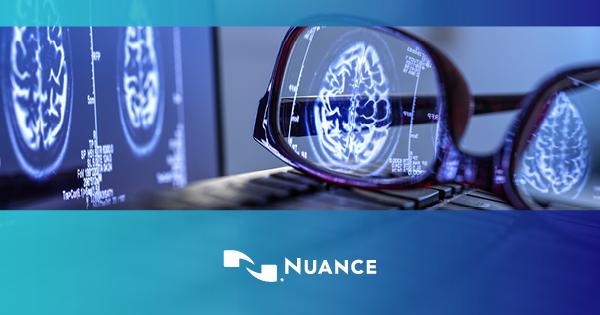BLOG: Emerging AI Technologies Provide Value Throughout the Patient Journey

Real-time intelligence in radiology workflow helps radiologists and clinicians make better decisions throughout the patient care journey and is made possible by a broad spectrum of capabilities enabled by artificial intelligence (AI). These capabilities range from natural language understanding technologies that can transform the narrative text into meaningful structured data to drive workflow to complex machine learning and other types of AI-driven models that assist with image interpretation and clinical decision support. In study after study, AI technology demonstrates that it can automate manual and mundane tasks that get in the way of radiologists' ability to stay focused on what matters most. More importantly, AI adds new levels of insight and detail that provide a more comprehensive clinical picture, improving the ability to make the right diagnosis and care decisions.
"In the past, radiologists spent a lot of their time searching for information and digging through multiple sources of data for answers to the pressing clinical questions in front of them," said Karen Holzberger, senior vice president and general manager of Nuance Healthcare's diagnostic solutions business. "Now, with workflow-integrated intelligence through AI tools, critical information is being presented in real-time within the radiologist's regular workflow."
This evolution to on-demand intelligence within the solutions they use every day means radiologists can move more confidently through each study, with critical information at their fingertips to make a timely, accurate interpretation, and deliver appropriate, evidence-based recommendations. The shift is possible because of AI tools that cover the complete radiology workflow, from planning and preparation to image characterization and decision support to report creation, communication, and quality assurance. The result is more precise, consistent, and informative reports so downstream clinicians can make the most appropriate decisions and accelerate time to care.
For example, AI tools can help identify and prioritize urgent cases, such as an aortic aneurysm, so that a radiologist reviews them sooner. The AI service can offer quantitative measurements to help identify, manage, and track some diseases and help detect probable findings in more challenging cases. Additionally, cases with likely normal findings can be marked as such or be reassigned to another radiology worklist — or even designated for a resident/attending workflow — to support optimal workload management.
Combining AI services that target both image characterization and language understanding services can provide value across the patient pathway, as multiple AI solutions marry findings from pixel data (image characterization) and unstructured data from the narrative text in the diagnostic report. This derives insight and meaning from both the dictated words and the imaging data that is captured.
"You're going to see tremendous benefits all along the AI technology spectrum. Clinical intelligence derived from language understanding, along with that obtained through AI-driven image characterization models, brings entirely new levels of information and insight to the radiologist," Holzberger said. "And that's where you're going to drive the efficiency, quality improvement, and ultimately the improvement of the patient outcomes, because you're going to get to the right best care pathway for that patient."
AI tools ensure radiologists work more efficiently and effectively, as EHRs and advanced imaging technologies increase the volume of data generated and the resulting radiology workload. And as more AI tools become available, Holzberger said that success first depends on how well it can integrate within existing workflows for busy radiologists.
Efficiency also means creating a system that provides access to AI services and technology in a way that radiologists and technicians want to interact with them, whether it be operating in the background of an existing system or through a separately launched application.
"A radiologist needs the flexibility to choose the best app for the clinical situation. So, if I'm using an aortic aneurysm model from company X and a different model from company Y, how do I start using and comparing both, so I can pick the one that works best for me under my patient conditions, my modality conditions, and the region of the world that I'm in?" asked Holzberger.
With more AI tools coming into the marketplace, and radiology practices looking to implement AI services from multiple vendors, they will need an easy way to onboard new technologies and gain trust in each one's capabilities. Because a single AI service only addresses one question, Holzberger anticipates that AI vendors will begin grouping multiple services into bundled solutions that focus on an organ, a disease state, a body part, or a subspecialty. These solutions would then be available through an AI Marketplace to provide radiologists an easy way to onboard and test new technologies and gain feedback from other members of patient care teams — often the downstream beneficiaries of AI-generated outputs.
Moving forward, Holzberger is optimistic about the future of AI and wants to see AI capabilities expand to address more medical challenges and create demonstrable value for downstream clinicians.
"We need to accelerate AI development and adoption to answer the toughest questions for radiologists, so they can deliver the best quality and value to the clinicians and patients they serve," Holzberger said. "Let's go answer the next ten most important clinical questions. That's going to drive productivity and support higher quality evidence-based medicine for the radiologist and care team."
Editor's note: This blog is the first in a four-part series about real-time intelligence in the radiology workflow, to be published monthly. To learn more visit nuance.com/healthcare/diagnostics-solutions



 April 17, 2024
April 17, 2024 








